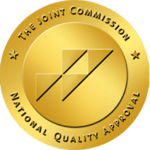Whether by habit or by trying to seek a different kind of experience, many people often make the mistake of taking alcohol with substances. One of the more common instances of this is when people take pain pills and alcohol together.
47,500 deaths annually are attributable to the long-term health consequences of drinking too much over time. 95,000 Americans die from alcohol-related causes annually; 68,000 of them are men. 27,000 of them are women.
While some people take medications like oxycodone with alcohol under the misguided notion that the alcohol would make the pain-killing action faster, there are those who take the medication with alcohol in the hopes of a greater high.
This is a known phenomenon regarding those who abuse painkillers, as those who have abused substances like oxycodone develop an increased threshold for it, and thereby require more of it, or something to intensify its effect, to get the high they are looking for.
Why Are Some People Hooked on Pain Pills?
Millions of people suffer from chronic pain each day. Whether it be from some undiagnosed source or from an old injury, chronic pain could range from simply being a constant nuisance all the way to being periodically debilitating.
For many, the only way to deal with it is to pop a pill and the pain will go away for a while, or at least come down to more manageable levels. This habit of popping pills, however, is the surest and easiest way to develop an addiction to painkillers, and the statistics around it are nothing short of alarming.
In the US alone, a 2020 report from the National Center for Drug Abuse Statistics states at least 12% of all young adults aged 12 and older have misused prescription medication, including painkillers.
Of the total number of people with a drug disorder recorded in 2020, at least 24.7% of them use prescription painkillers and heroin. Add to this the fact that the same report indicates that 28,320 million Americans aged 12 and older have an alcohol use disorder.
An even more alarming fact is the growing rate of overdose deaths related to painkiller abuse. In 2017 alone, at least 17,029 prescription painkiller-related overdose deaths were recorded. Many of those who were lucky enough to make it to rehabilitation admitted they acquired the painkillers they abused through a friend or a relative, usually by using their prescription or stealing from them outright.
How Chronic Pain Can Lead to Mixing Pain Pills and Alcohol
Chronic pain is defined as any pain lasting more than 12 weeks. It can be caused by an injury, disease, or even a mental health condition. Many people who live with chronic pain turn to substances like alcohol or drugs in an attempt to self-medicate.
Unfortunately, mixing substances can often lead to even more problems. For example, mixing pain pills and alcohol can result in liver damage, respiratory problems, and an increased risk of overdose.
Moreover, chronic pain sufferers are more likely to develop substance use disorders. In fact, nearly half of all people receiving treatment for chronic pain also have a diagnosis of substance abuse.
How Prevalent is Alcohol Misuse?
California sees the nation’s highest number of alcohol-related deaths but has a low rate of underage drinking. 16.6% of California adults over 18 binge drink at least once per month.
The median number of drinks per binge is 5.5; 25% of most active drinkers consume a median of 7.7 drinks per binge. Binge-drinking adults in California binge a median of 1.6 times monthly; 25% of most active drinkers binge 3.7 times per month.
Most American adults consume alcohol at least once in their lifetime. Among them, 6.7% will develop Alcohol Use Disorder (AUD). 10.2% of Americans aged 12 years and older had Alcohol Use Disorder in 2020.
24.0% of people aged 18 years and older reported binge drinking in the last 30 days; this is a 7.0% decline between 2019 and 2020. Every day, 385 Americans die as a result of excessive alcohol use.
Are Mixing Alcohol and Pain Pills Really Dangerous?
In itself, alcohol is already a hazardous substance, particularly if taken frequently and in quantities that exceed the body’s capacity to properly filter it out. While it might be portrayed as part of an adult’s leisurely lifestyle, alcohol produces less-than-glamorous side effects that would definitely make most people think twice about taking that nightcap.
Alcohol has both short-term and long-term effects, with many of these effects being chronic. The short-term effect includes:
- Drowsiness
- Euphoria (in some cases)
- Diminished inhibitions
- Lack of impulse control
- Mood swings
- Slurred speech
- Nausea
- Vomiting
- Diarrhea
- Headaches
- Compromised sensory acuity (hearing and vision)
- Loss of coordination
- Compromised decision-making
Taking alcohol for quite some time will cause more severe side effects, as more parts of the body become affected by the toxicity brought on by alcohol abuse.
- Increased anxiety and irritability
- Disrupted sleep patterns
- Insomnia
- Compromised immune system
- Affected sexual drive and performance
- Drastic weight change
- Inability to focus
- Frequent stupor
- Compromised cognitive functions
These effects are brought on by alcohol abuse alone. Combined with other substances, such as painkillers, the effects could be far worse and might even become life-threatening.
As alcohol already has a powerful depressant effect, combined with a substance that also acts as another depressant or sedative, vital functions such as breathing, heart rate, and thinking could be severely impaired to the point where hospitalization is needed.
Possible effects when alcohol is mixed with substances:
Depressants
When alcohol is taken with depressants, the effect could be a rapid onset of dizziness, loss of coordination, inability to properly perceive surroundings, loss of bowel control, impaired cognitive functions, memory loss, slipping into a coma, and potential death.
Prescription Medications
Taking alcohol with prescription medications that have opiate or opioid properties could lead to severely compromised breathing, drastically slowed heart rate, decreased blood pressure, loss of consciousness, slipping into a coma, and potential death.
Stimulants
When taken with stimulants, the problems begin with the inability of the person to determine just how intoxicated they are. The usual sensation of drowsiness and heavy relaxation and sedation brought on by alcohol could be delayed or minimized, causing the person to drink more than what the body could handle. The effect is a sudden loss of coordination, impaired judgment, loss of consciousness, and potential death.
How Are Alcohol and Substance Use Treated?
Both alcohol and drug abuse require immediate attention as these substances are known to eventually damage vital organs to the point where the person dies of organ failure. Addiction to either alcohol or substances will already damage the body, and combining the two will only hasten the effect.
The rehabilitation process is often followed by a period where the patient is allowed to leave the treatment facility and try to reintegrate into normal life once more. This is aided by continued therapy and support group sessions. This phase is important to ensure that the patient is able to cope with the environment outside of the treatment facility without giving in to the possibility of a relapse.
Detoxification
Detoxification is immediately required so as to mitigate whatever damage is already present and to prevent further damage from happening. This period is also where the withdrawal effect begins to come in, making it a particularly agonizing time for the person.
The withdrawal symptoms a person could expect include:
- Nausea
- Headaches
- Depression
- Anxiety
- Irritability
- Insomnia
- Vomiting
- Fatigue
- Increased craving for alcohol and drugs
As different people have different thresholds, the time wherein the withdrawal symptoms persist will often vary. There is also no particular expected pattern to the duration of the symptoms.
There are some who have been abusing both alcohol and drugs for a long time but only experienced a relatively short duration of symptoms, and there are also others who may have not been in it long but experience the symptoms for longer.
In some cases, there is even a need for medication assistance during detox, as some patients experience increased levels of anxiety and even seizures. This is why detox centers are staffed with highly trained staff and medical professionals.
Once detox is done, the patient is assessed to determine what particular type of treatment or therapy is required to facilitate rehabilitation and get them on their way to a full recovery. This is where the patient is made to understand what steps are needed to achieve recovery and also ensure that sobriety is maintained with no fear of a relapse.
Inpatient Treatment
Inpatient treatment for substance abuse can be a lifesaver for many people who have become addicted to drugs or alcohol. It can provide a safe and supervised environment where detox and withdrawal can be managed under medical supervision, and where patients can begin to learn the skills they need to stay sober.
Inpatient treatment can also be beneficial for those who have relapsed after trying to quit on their own; in a treatment setting, patients can get back on track with their recovery and avoid the dangers of mixing pain pills and alcohol. Inpatient treatment is not always easy, but it can be an effective step on the road to recovery.
Outpatient Treatment
Outpatient treatment programs typically involve meeting with a counselor on a weekly basis. During these sessions, patients will work on identifying the triggers that lead to abusing substances and developing coping mechanisms to deal with these triggers.
In addition, patients will learn about the risks of mixing pain pills and alcohol and how to avoid doing so in the future. With commitment and effort, outpatient treatment can be successful in helping people overcome addiction and live healthier lives.
Sober Living
Many people who struggle with substance abuse also battle chronic pain. For years, doctors prescribed opioid pain medication as a way to help these patients find relief. However, we now know that mixing these pain pills with alcohol can be extremely dangerous.
That’s why sober living centers like ours offer a unique opportunity for people in recovery. In addition to providing a safe and supportive environment, sober living centers also offer residents the chance to find pain relief without using drugs or alcohol.
Our on-site medical staff can help residents find the right combination of medication and therapy to manage their pain, and our recovery coaches can provide support and guidance as they navigate this difficult journey.
Sobriety Is Within Your Reach at Westwind Recovery®
There is nothing easy about getting out of a bad habit like alcohol and abused substances. There will be great pain, stress, and anxiety, but it is possible and manageable with the support of the right people.
This is why dedicated therapists and medical personnel are needed to be on hand. The tendency to quit the program is particularly high during the height of the withdrawal symptoms. As the patient feels that kicking the habit, they might feel it is not worth all the pain and discomfort being experienced.
This is what we do here at Westwind Recovery®. We go to great lengths to ensure that recovery and sobriety are not just promises, but a reality, because everyone deserves a second chance at a normal life.
See us now and make your recovery a reality.

Dr. Deena is the Chief Clinical Officer of Westwind Recovery®, an award-winning outpatient treatment center in Los Angeles where she oversees the clinical and administrative program and treatment methods. Dr. Deena is a doctor of psychology and licensed clinical social worker since 1993. LCSW #20628. Originally from the East Coast, Dr. Deena has worked running treatment centers, worked as a therapist in psychiatric hospitals as well as school settings and currently has a thriving private practice in the LA area. Dr. Deena has appeared regularly on the Dr. Phil Show as an expert since 2003. She has also been featured on many other TV shows, podcasts and has contributed to written publications as well as podcasts.





